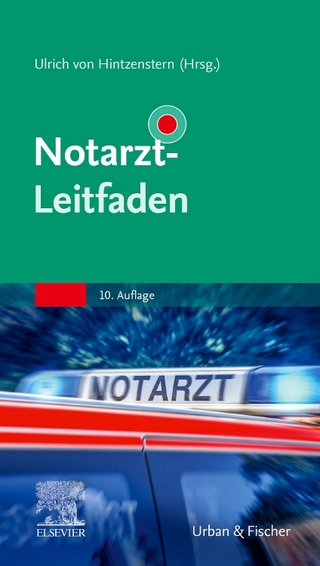
Magico-Religious Groups and Ritualistic Activities
A Guide for First Responders
Seiten
2008
Crc Press Inc (Verlag)
978-1-4200-5186-5 (ISBN)
Crc Press Inc (Verlag)
978-1-4200-5186-5 (ISBN)
- Titel z.Zt. nicht lieferbar
- Versandkostenfrei innerhalb Deutschlands
- Auch auf Rechnung
- Verfügbarkeit in der Filiale vor Ort prüfen
- Artikel merken
Offering a cultural bridge for emergency responders, this book provides keys to communication, assessment, and treatment in culturally sensitive situations. It includes a look at common herbs used in healing and ritual, a glossary of cultural terms, and an index of symbols.
A woman lays unconscious on the floor surrounded by charcoaled symbols, burning candles, a bowl of viscous red liquid, and an array of dried herbs. Was this a healing ritual gone wrong or just straightforward foul play? Increasingly, first responders must deal with foreign practices and cultures that are often disturbing in their unfamiliarity. Understanding cultural variations and nuances can make the difference between much-needed emergency treatment and the aggravation of an already sensitive situation.
The first book of its kind, Magico-Religious Groups and Ritualistic Activities: A Guide for First Responders provides a cultural bridge for emergency personnel when interacting with various magico-religious cultures. More than just a litany of artifacts, rituals, and symbols, this valuable book draws from cultural anthropology and religious studies to unearth hidden meanings and place the information in a context relevant for the first responder. It offers crucial keys for improving communication, assessment, and treatment in culturally sensitive situations.
Beginning with an introduction to the importance of trans-cultural communication, the book devotes subsequent chapters to the common and contrasting elements of several magico-religious groups. It considers the practices of Neo-Paganism, Santeria, Bantu religion (Palo Mayombe), Voodoo, and Curanderismo. The book separates fact from fantasy regarding sacred spaces and dates, ceremonies, group structure, sacred objects, cultural taboos, and beliefs about sickness and healing. It also includes a detailed review of the common herbs used in healing and ritual, as well as a glossary of cultural terms and an index of symbols.
Promoting functional cultural competency, this book gives public service agencies and emergency responders the tools to properly assess situations, open lines of communication, protect cultural diversity and beliefs and, above all, provide effective emergency treatment.
A woman lays unconscious on the floor surrounded by charcoaled symbols, burning candles, a bowl of viscous red liquid, and an array of dried herbs. Was this a healing ritual gone wrong or just straightforward foul play? Increasingly, first responders must deal with foreign practices and cultures that are often disturbing in their unfamiliarity. Understanding cultural variations and nuances can make the difference between much-needed emergency treatment and the aggravation of an already sensitive situation.
The first book of its kind, Magico-Religious Groups and Ritualistic Activities: A Guide for First Responders provides a cultural bridge for emergency personnel when interacting with various magico-religious cultures. More than just a litany of artifacts, rituals, and symbols, this valuable book draws from cultural anthropology and religious studies to unearth hidden meanings and place the information in a context relevant for the first responder. It offers crucial keys for improving communication, assessment, and treatment in culturally sensitive situations.
Beginning with an introduction to the importance of trans-cultural communication, the book devotes subsequent chapters to the common and contrasting elements of several magico-religious groups. It considers the practices of Neo-Paganism, Santeria, Bantu religion (Palo Mayombe), Voodoo, and Curanderismo. The book separates fact from fantasy regarding sacred spaces and dates, ceremonies, group structure, sacred objects, cultural taboos, and beliefs about sickness and healing. It also includes a detailed review of the common herbs used in healing and ritual, as well as a glossary of cultural terms and an index of symbols.
Promoting functional cultural competency, this book gives public service agencies and emergency responders the tools to properly assess situations, open lines of communication, protect cultural diversity and beliefs and, above all, provide effective emergency treatment.
Tony M. Kail
Introduction. An Introduction to Religious Culture for Responders. Neopaganism. Santeria (Regla de Ocha). Palo and Kongo Religions. Voodoo. Curanderismo. Closing Issues. Appendices. Index.
| Erscheint lt. Verlag | 14.4.2008 |
|---|---|
| Zusatzinfo | 68 Halftones, black and white; 82 Illustrations, black and white |
| Verlagsort | Bosa Roca |
| Sprache | englisch |
| Maße | 156 x 234 mm |
| Gewicht | 470 g |
| Themenwelt | Geisteswissenschaften ► Religion / Theologie |
| Medizin / Pharmazie ► Allgemeines / Lexika | |
| Medizin / Pharmazie ► Medizinische Fachgebiete ► Notfallmedizin | |
| Recht / Steuern ► Strafrecht ► Kriminologie | |
| Sozialwissenschaften ► Politik / Verwaltung | |
| Wirtschaft | |
| ISBN-10 | 1-4200-5186-5 / 1420051865 |
| ISBN-13 | 978-1-4200-5186-5 / 9781420051865 |
| Zustand | Neuware |
| Haben Sie eine Frage zum Produkt? |
Mehr entdecken
aus dem Bereich
aus dem Bereich
1000 kommentierte Prüfungsfragen
Buch (2023)
Thieme (Verlag)
100,00 €


